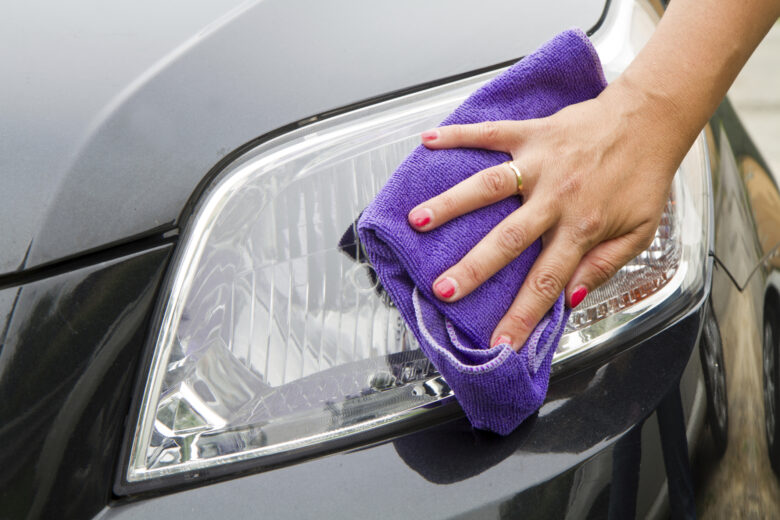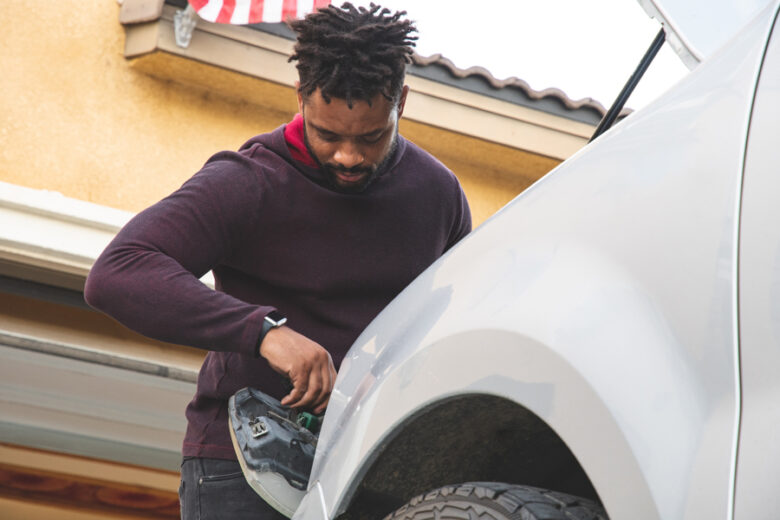As we all know, headlights tend to wear off with time, and no wonder this happens. Salt and pebbles, we encounter on the roads, especially in winter, moisture condensation in spring and autumn, solar radiation in summer… These are all things headlights have to endure all year long, so it’s no wonder that they suffer over time.
The problem is relatively easy to solve from the outside because it is mostly a matter of blurring. Polishing and washing for a short time, and varnishing with special varnishes from the outside solve that problem for a long time. However, impurities also accumulate in the interior of the headlights over time.

Source: itstillruns.com
And to the inside, unfortunately, there is only a narrow opening for the light bulb, through which you cannot put anything to thoroughly clean them. An additional problem is that the headlights no longer have a metal body and are glass-like thirty years ago, but are made of plastic and polycarbonate. What represents the biggest challenge is the moisture and condensation accumulating inside, which many of you reading this article have no idea how to get rid of.
But, no worries, we’re going to tackle this issue in the rest of the article…
Let’s start from the simplest: water in headlights is created in the same way as it is in any closed space, i.e. due to condensation. This phenomenon occurs in different ways.
- First, in cases where the cover is not returned the way, it’s supposed to, to its intended place, which mostly happens after replacing a burnt-out bulb.
- Second, when the channels that serve to remove warm air from the headlight itself are blocked, that is, they serve to vent the headlight. These are usually small rubber tubes that become clogged with dirt or dead insects over time.
- Third, when the sealing compound between the housing and the “glass” of the headlight wears out.
So, what do you do? The process of drying the headlight housing is complicated. It is necessary to remove it, wipe it, mount it again with the use of silicone, and all this requires time and additional investments, which tends to cost. But, most of us just want a quick and cheap solution to the problem. One of the methods you can use to prevent this from happening is purchasing a quality bulb, which can be found if you click here.
Have you ever wondered why is water or moisture in headlights dangerous?

Source: autozone.com
Because it can cause even more problems. At first, the material inside the housing will be covered with a layer of moisture, but soon rust will appear, and then the repair becomes more complicated and expensive, and you can understand the scale of the problem when you see how much more modern headlights cost. This is something many of us fail to check when purchasing used vehicles, even though it should be on your list of things to check.
On the other hand, people selling used vehicles are very skillful at hiding this problem. How do they hide it? Well, every experienced dealer, before meeting a potential client, will start the engine of the car he wants to sell, with the hood open. They do this because there is a hole in the headlight housing for draining unwanted liquid, and it is usually closed with a rubber plug. The elastic band will be removed and the lights will remain on.
The bulb will heat up very quickly and dry out the headlight housing. Of course, we are talking here about older vehicles, which mostly use halogens. With headlights of this type, and in the described situation, it will only take a few minutes for the housing to dry, and for the customer to see the lighting in its full glory. If the car uses a more modern lighting solution, something like LEDs, don’t even think about any gimmicks. One drop of liquid that would eventually get on the diode, can cost a couple of thousand to replace the entire light block.
Headlights are not the only place where moisture is your enemy…

Source: jamjar.com
Now that you know what kind of danger it carries in your headlights, you should also know there are other places you should start worrying about if you find water or moisture. We’re talking about the inside of your vehicle. If you have moisture in the vehicle, the most important thing to do is to find all its traces, and then the causes.
You usually notice it by the fogged windows, mostly caused by moisture in the carpets and under them. It can also accumulate in the trunk and spare wheel compartment. If you haven’t looked there for a long time, immediately check for signs of moisture or, even worse, water.
As a rule, these are the lowest parts of the vehicle, and if water leaks or drips somewhere in the car, which is possible if it is, for example, an older vehicle with damaged or cracked rubber seals of the door or trunk lid, it could easily end up right there. The same goes for small cracks in the headlights: you may think they can’t harm you, but moisture can also enter the vehicle through them. Water always finds a way to get in where it’s not supposed to.
What this may mean does not need to be explained: apart from the bodywork, which can suffer from corrosion, even more headaches for the owner could be problems with electricity: quite a few cars, especially newer ones, have sensitive electronics at the bottom of the trunk, including for example batteries and wiring with various connectors.
So, don’t be lazy, but look under the carpet from time to time. If you act on time you could get rid of big problems, and save yourself from having unwanted expenses.

